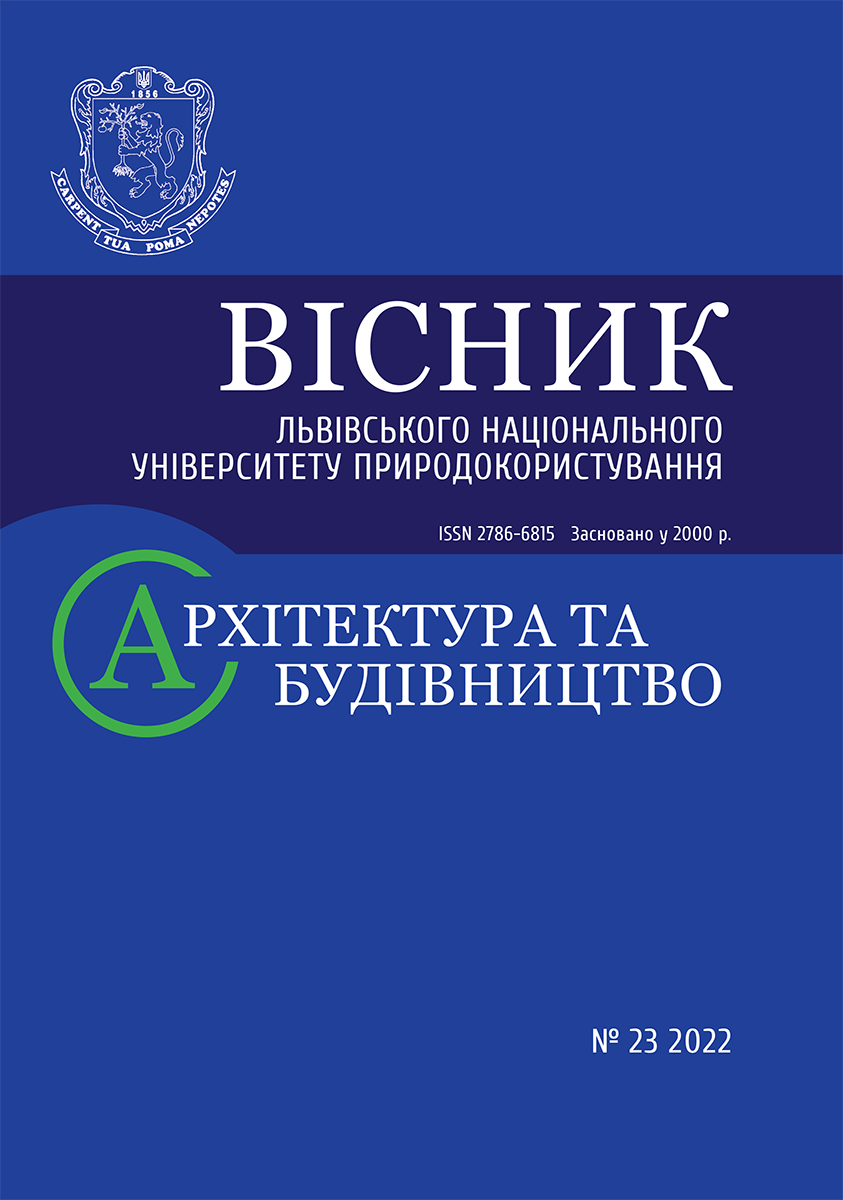ANCHORING OF ROD REINFORCEMENT OF CLASS A500C IN STEEL FIBER CONCRETE
Keywords:
steel fiber, steel fiber concrete, rod reinforcement, tensile test, adhesionAbstract
Anchoring of reinforcement rods of a periodic profile due to adhesion with concrete ensures the joint operation of these materials in structures. The forces that arise in the area of contact between the rods and concrete depend on adhesion, friction on the contact surface and wedging perpendicular to the transverse ribs of the rods. Reinforcement of concrete with fiber reinforcement contributes to jamming of rods, increasing the values of both radial forces and maximum forces for pulling rods out of concrete.
The program of our research includes the study of the influence of concrete strength (concrete classes C20/25 and C30/35), the ratio of the anchoring length of the rod to its diameter (8 and 12), the coefficient of fiber reinforcement by volume (0.007 and 0.018) and the diameter of the rods (8 and 12 mm) on the development of shifts and stresses in the rods. The experimental studies involved tensile testing of A500C reinforcement rods, driven in the center of the base of prismatic samples with dimensions of 150×150×200 mm.
A full four-factor experiment plan (plan 24) was used and regression equations were obtained for the stresses in the rods for the initial shear, for a shear of 0.1 mm (conditional bond strength criterion) and for the maximum stress values.
The analysis of the obtained regression equations of the plan of experiment 24 proved that the content of fiber reinforcement has a significant effect on the stresses presented above. So, for example, for the laying length of 144 mm of rods Ø12 mm in concrete of class C30/35, reinforced with 1.8% fiber by volume, the stress in the rods for a displacement of 0.1 mm was equal to 622.39 MPa on average, and for the content fibers 0.7% ‒ 514.81 MPa. For the laying length of 144 mm of Ø12 mm rods in concrete of class C20/25, reinforced with 1.8% fiber by volume, the stress in the rods for a shear of 0.1 mm was equal to 446.92 MPa on average, and for the fiber content 0.7 % ‒ 386.22 MPa. For the laying length of 64 mm of rods Ø8 mm in concrete of class C20/25, reinforced with 1.8% fiber by volume, the stress in the rods for a displacement of 0.1 mm equaled 301.94 MPa on average, and for the fiber content 0.7 % ‒ 249.76 MPa.
References
Babych E. M., Babych V. E., Polianovska O. E. Adhesion of sickle profile reinforcement to concrete and its anchoring in flexural reinforced concrete elements: monograph. Rivne: Volynsky charms, 2017. 160 p.
Babych E. M., Kochkariov D. V., Filipchuk S. V. Mathematical model of rebar adhesion with high-strength concrete. Building structures. Theory and practice: coll. of science works. Kyiv: KNUBA, 2018. Issue 2. P. 154–161.
Bandelt M. J., Billington S. L. Bond behavior of steel reinforcement in high-performance fiber-reinforced cementitious composite flexural members. Materials and Structures. 2016. Vol. 49. P. 71–86.
Bilozir V. V., Mazurak R. A. Analysis of factors influencing the adhesion of sickle-shaped reinforcement with concrete and fiber concrete. Modern technologies and calculation methods in construction. 2020. Issue. 14. P. 47–54.
Dvorkin L. Y., Dvorkin O. L., Zhytkovskyi V. V. Solving construction and technological problems by methods of mathematical planning of the experiment: Study. manual. Rivne: NUVHP, 2011. 174 p.
Garcia-Taengua E., Marti-Vargas J. R., Serna P. Bond of reinforcing bars to steel fiber reinforced concrete. Construction and Building Materials. 2016. Vol. 105. P. 275–284.
Garcia-Taengua E., Marti-Vargas J. R., Serna P. Splitting of concrete cover in steel fiber reinforced concrete: Semi-empirical modeling and minimum confinement requirements. Construction and Building Materials. 2014. Vol. 66. P. 743–751.
Garcia-Taengua E., Marti-Vargas J. R., Serna-Ros P. Statistical approach to effect of factors involved in bond performance of steel fiber-reinforced concrete. ACI Structural Journal. 2011. Vol. 108(4). P. 461–468.
Harajli M. H., Hamad B., Karam K. Bond-slip Response of Reinforcing Bars Embedded in Plain and Fiber Concrete. Journal of Materials in Civil Engineering. 2002. Vol. 14. P. 503–511.
Pull-out test, 1983 // RILEM Recommendations for the Testing and Use of Construction Materials. New York, USA: E & FN SPON, 1994. P. 218–220.
Rehm G. The basic principles of the bond between steel and concrete: Translation. Cement and concrete association. London, 1968. № 134. 66 p. 2. TC R. RC 6 Bond test for reinforcement steel.
Zhang X., Zhang W., Cao C., Xu F., Yang C. Positive effects of aligned steel fiber on bond behavior between steel rebar and concrete. Cement and Concrete Composites. 2020. Vol. 114. 103828. 11 p.


